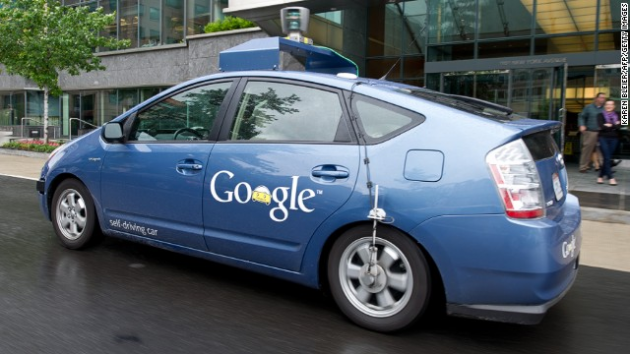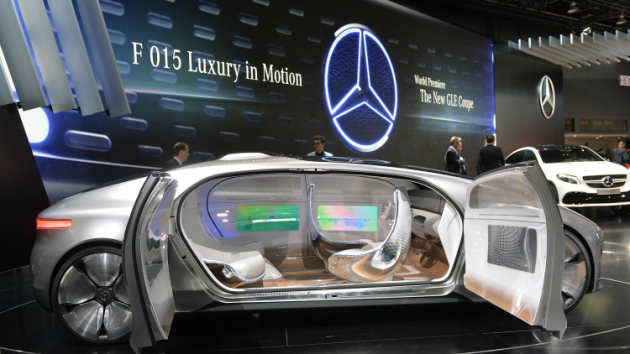Google Committed to Launching Fully Self-Driving Cars Within 5 Years
With virtual reality, self-driving cars, and even flying cars all set to be released to the public during the next few years, the sci-fi movie-depicted version of the year 2020 is starting to look a lot like a very real possibility.
We previously reported that by 2017 Google aims to release their autonomous driving software called Google Chauffeur, which will power their fleet of self-driving cars. Now, more recent reports indicate that Google has a road map to get both the software and the self-driving cars themselves into the hands of the public by no later than 2020.
Back in May of last year Google announced that their self-driving car project would no longer only be modifying existing vehicles from automobile manufacturers, but would also be producing a fleet its own fully self-driving vehicles that would contain no steering wheel, pedals, or other user controls (other than the Stop/Go button). Then in December, Google unveiled their first fully functional driverless automobile prototype.
Next Generation of Drivers Won't Need to Know How to Drive?
 Google's self-driving car project director, Chris Urmson, recently told delegates at TED's Machines That Learn conference about a more personal incentive behind wanting to have the project ready for commercialization within a 5-year timeframe:
Google's self-driving car project director, Chris Urmson, recently told delegates at TED's Machines That Learn conference about a more personal incentive behind wanting to have the project ready for commercialization within a 5-year timeframe:
His son is 11 years old and will be due to take the driving test for his license in 4 and a half years. According to Chris, him and his team are "committed to making sure that doesn't happen."
But shouldn't all vehicles have the ability to operate under manual driver control as well? That's the approach that many car manufacturers have taken, installing driver-assistance modes that provide a partially autonomous driving experience. In contrast, Google's approach under Urstrom's direction is focusing more on being able to completely cut out the automobile's most faulty component altogether, which, Urmson says, is the human driver.
Urmson bolstered this argument in the opening a segment of his presentation with:
"In 1885, Carl Benz invented the automobile. A year later, he took it out for a test drive and, true story, promptly crashed it into a wall. Throughout the history of the car, We’ve been working around the least reliable part of the car: the driver.”
Letting Computers Drive Would Be Safer?
Some skeptics have been questioning whether the general public would be "okay" with being driven around by a fully autonomous vehicle that doesn't have a steering wheel or easily accessible user-override feature. However, one of the strong points of Urmson's presentation at the recent TED conference highlighted the fact that:
"1.2 million people are killed on the roads around the world each year. That number is equivalent to a jet falling out of the sky every day."
The obvious implication being that self-driven cars could greatly reduce that statistic.
Getting Rid of Parking Lots is a Big Deal Now?
Another interesting, yet subtle point in the conference, was Urmson's response to the driver- assistance approach, in which he acknowledged the usefulness of driver-assistance modes while also emphasizing the importance of fully autonomous automobiles by saying:
"If we are really going to make changes to our cities, get rid of parking lots, we need self-driving cars."
Did anyone else notice that he could've picked any other city improvement as an example, and yet he chose "getting rid of parking lots" to drive the point home (pun intended here).
Parking lots take up space unnecessarily, and in the near future when land and space management will be imperative to furthering the development of densely inhabited cities, eliminating parking lots could create much-needed room for the expansion of existing businesses, as well as the construction of additional establishments.
A Whole New Taxi Industry in the Making?
Parking lots and crappy human drivers aside, this whole self-driving car thing is turning into an entirely new transportation industry of its own: self-driving taxicabs.
Last month the so-called partnership-turned-battle between Google and Uber heated up when Uber announced that they're partnering with Carnegie Mellon University to develop their own navigational and self-driving car technologies.
Right now Uber is one of the biggest ridesharing apps, offering independent drivers the opportunity to earn a semi-decent living by instantly becoming a cab driver through the Uber app. While this creates jobs for drivers, it also drastically increases the cost of "Ubering."
Google's increasing interest in the production of self-driving cars and ridesharing technology, and their investments in their main "competitor" ($258 million invested in Uber through Google Ventures), are all pushing Uber to incorporate driverless taxis into their business model.
Ultimately, this all means that consumers can expect to see the arrival of self-driving cars accompanied and/or quickly followed by the introduction of robotic driverless taxicabs. However, according to a very recent poll, Google's biggest problem might not be the development of the technology itself, but the general public's low acceptance of it. Luckily, auto manufacturers are on-board with the concept and are doing a great job of persuading the public with awesome looking autonomous prototypes, like the Mercedes Benz F-015, pictured below:


